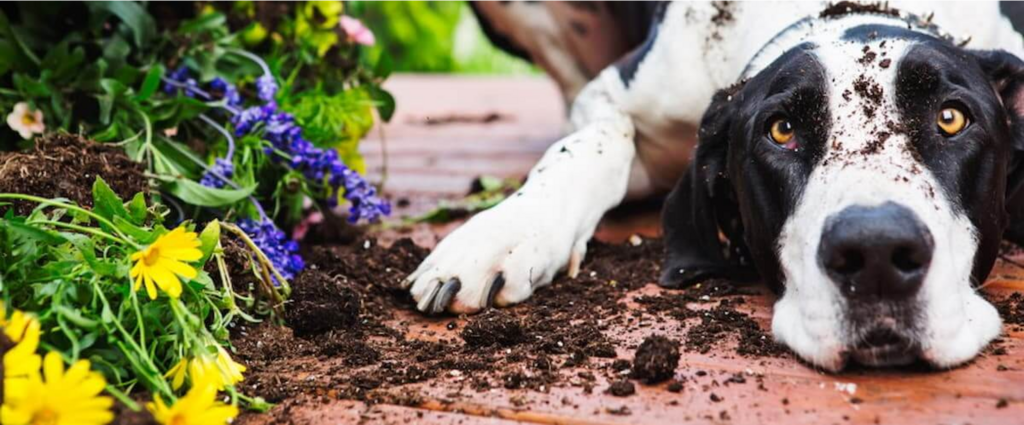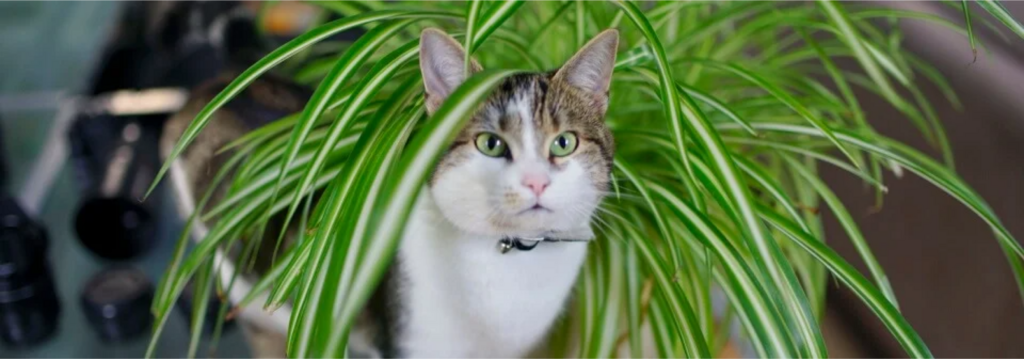Last Updated: 23/06/2025
Poisonous Plants For Pets
Check out our list of poisonous plants and pet-friendly alternatives!
Author: Dr Belinda Stancombe BVSc (Hons)
Reading Time: 15 minutes - medium read
Lilies
Lilies are commonly found in gardens, flower arrangements and indoor plants with those of the Daylily (Hermerocallis) or True Lily (Lilium) families the most dangerous. Ingestion of any part of the plant, including the leaves, stem, flower, pollen or even the water from a vase can result in fatal kidney failure. While they are toxic to both cats and dogs, cats seem to be particularly sensitive.
Japanese Sago Palm
The Japanese Sago Palm (Cycas revoluta), also known as a Cycad is a common ornamental garden plants in Australia. This plant is incredibly dangerous to dogs when consumed, with the seeds or 'nuts' being particularly toxic. Symptoms usually occur within 12 hours of ingestion and can include vomiting, diarrhoea, seizures and liver failure.
Daffodil
The Daffodil (Narcissus) is a member of the Amaryllidaceae family. It is a common flowering bulb which blooms in gardens in Spring and is a popular addition to bouquets. All parts of the plant, but particularly the bulb, are toxic to dogs and cats. Ingestion can result in vomiting, diarrhoea, low blood pressure, heart arrhythmias, tremors or seizures.
Autumn Crocus
Autumn Crocus (Colchicum autumnale), also known as Meadow Saffron or Naked Lady is a member of the Liliaceae family. This plant contains colchicine, a potent poison, with all parts of the plant highly toxic to dogs and particularly cats. Signs of toxicity can occur immediately after ingestion including vomiting, diarrhoea, gastric bleeding, major organ failure and seizures.
Cyclamen
Also known as the Persian Violet or Persian violet, the Cylamen is a beautiful flowering house plant. This plant contains saponins, which when ingested by pets cause oral irritation, drooling, vomiting or diarrhoea. High doses can result heart arrhythmias, seizures and death.
Tulip
The Tulip is a member of the Liliaceae family, and is a beautiful flowering bulb which blooms in Spring. All parts of the plant, but particularly the bulb, are toxic to dogs and cats. Ingestion can result in vomiting, diarrhoea and drooling.
Azalea
The Azalea is a species of Rhododendron and is a popular addition to many gardens along the east coast of Australia. This plant contain grayanotoxins which when ingested can cause vomiting, diarrhoea, weakness and cardiac abnormalities.
Fiddle Leaf Fig
The Fiddle Leaf Fig is a member of the Philodendron family, and are very popular tropical indoor plants. This plant contains insoluble calcium oxalate crystals and when chewed on by a dog or cat, causes severe oral irritation resulting pawing at the face, drooling foaming at the mouth, vomiting or breathing issues.
Monstera
The Monstera is a member of the Philodendron family and are very popular tropical indoor plants. This plant contains insoluble calcium oxalate crystals and when chewed on by a dog or cat, causes severe oral irritation resulting in pawing at the face, drooling foaming at the mouth, vomiting or breathing issues.
Peace Lily
While not considered a 'true lily' the Peace Lily is part of the Araceae family and is a very common indoor plant. This plant contains insoluble calcium oxalate crystals and when chewed on by a dog or cat, causes severe oral irritation resulting pawing at the face, drooling foaming at the mouth, vomiting or breathing issues.
Amaryllis
Also known as the Belladonna Lily, the Amaryllis is a member of the Amaryllidaceae family. Lycorine toxin is present in all parts of the plant, though it is most concentrated in the bulb. Ingestion by a dog or cat, of any part of the Amaryllis plant can cause gastrointestinal symptoms such as vomiting, diarrhoea or abdominal pain.
Eucalyptus
Also commonly referred to as Gum Trees, Eucalyptus plants are a member of the Myrtaceae family. Eucalyptus plants are a major source of Eucalyptus Oil, which when ingested by pets can cause gastointestinal and neurological signs including vomiting, diarrhoea, depression, weakness and seizures.
Yesterday, Today and Tomorrow
A popular plant in Australian gardens due to the pretty flowers, the Yesterday, Today and Tomorrow (Brunfelsia) contains two different toxins, brunfelsamidine and hopeanine and is highly toxic to pets. Clinical signs after ingestion include uncontrollable seizures lasting days, tremors, vomiting, diarrhoea and incoordination.
Oleander
Don't let these pretty flowers fool you, the Oleander (Nerium oleander) is extremely toxic to all animals when consumed. Clinical signs can quickly develop and include vomiting, diarrhoea, heart abnormalities and neurological signs.
Aloe Vera
Commonly grown in backyards around Australia, Aloe Vera is known for its medicinal properties with the sap or gel a common ingredient in many beauty and medical products. The Aloe Vera plant itself, contains saponins and anthraquinones, which when ingested can cause vomiting and diarrhoea in dogs and cats.
Snake Plant
Snake Plant or Mother-In-Law's Tongue (Sansevieria trifasciata) is a very popular indoor plant and thrives in low light conditions. This plant contains saponins and when ingested by dogs or cats can cause vomiting, diarrhoea and nausea.
Foxglove
The Foxglove (Digitalis purpurea) is a member of the Scrophalariaceae family and is a common plant in many gardens. This plant is highly toxic to dogs, cats and even humans, and contains a cardiac glycosides toxin. Signs of ingestion include cardiac arrhythmias, vomiting, diarrhoea, weakness and even death.
Nightshade
Nightshade (Solanum spp) also known as Deadly and Black Nightshade is a member of the Solanaceae family. The leaves and fruit of this plants, are highly toxic to dogs, cats and people if ingested and may cause severe gastrointestinal signs, depression, confusion, dilated pupils and slow heart rate.
Devil's Ivy
Devil's Ivy, also known as Pothos is a member of the Araceae family, and is a very popular indoor plant. This plant contains insoluble calcium oxalate crystals and when chewed on by a dog or cat, causes severe oral irritation resulting in pawing at the face, drooling, foaming at the mouth, vomiting or breathing issues.
Wandering Jew
Wandering Jew (Tradescantia) is a member of the Commelinaceae family. It is an invasive plant that is common in backyards and will grow pretty much anywhere. Contact with this plant is a common cause of allergic skin issues in dogs resulting in itchy, red feet, tummy and muzzle, conjunctivitis or loss of fur.



